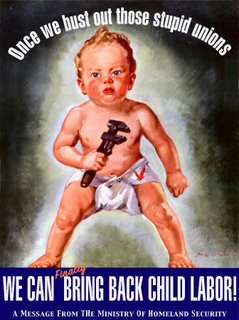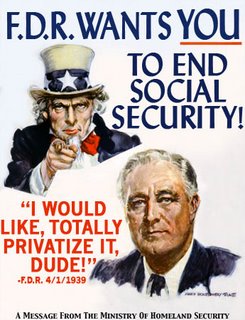Megan
Response #10 We Shall Overcome: African Americans and the Second Reconstruction, 1945 - 19651. Music of the Civil Rights Movement
The music reveals that the Civil Movement wenergizedzed and hopeful of what the future held. African Americans were no longer letting themselves be disrespected -- they were taking a stand for thedignityity. And there was nothing that anyone could do to change that. They sung about the hate and violence they endured like in the song "In the Mississippi River" which was written as a result of the discovery of the bodies of civil rights leaders in the Mississippi River. But no matter how bad it got, they held on and 'kept their eyes on the prize.'
Back since the days of slaverAfricancAmericansans have been rooted in their religious faiths. The people found solace in their belief in what the Scriptures told them about salvation in heaven. Religion was so important to the slaves that they would go to church even though when they returned they would be beaten for it. African American churches were the focal point of their communities. "We Shall Overcome" is an example of how religious spirituals carried on generation after generation from the days of slavery. Originally the song was sang by slaves tired from a long day working on the fields (
History of We Shall OvercomeReligiousous overtones were not hidden. They were spoken clearly and proudly as in "Woke Up This Morning with My Mind on Freedom," the refrain echoes "Hallelu, hallelu, hallelujah."
They sang the religious spirituals calling on God to help them in the faces of those who persecuted them. As a result, the songs functioned in forcing those persecuting them to reflect and possibly recognize injustice. It posed the question, 'If these people were on the side of God then whose side am I on?" That questiresonatedded heavily in the minds of Americans.
The songs functioned in the civil rights movement in uniting it. It was non-combative and impossible to ignore. The songs of the people were loud, proud, and powerful. They were instrumental in boosting weary spirits.
The strong role of the federal government supporting the supreme court rulings was a crucial to the Civil Rights. But their intervention did not come naturally. It took Arkansas Governer George C. Wallace to test the power of State government in overriding civil rights rulings for the federal government to act.
In terms of getting the federal government to intervene, the support of the public was necessaryarticlertical mentions television reporters and journalists presence at these conflicts. Their reporting the violent conflicts helped gain that public support for the civil rights movement.
"I don't see how President Johnson can send troops to Vietnam - I don't see
how he can send troops to the Congo - I don't see how he can send troops to
Africa and can't end troops to Selma, Ala.," Martin Luther
King said.
3. Malcolm X
The Nation of Islam advocated nationalism and racial seperatism. This clip resonates these beliefs -- Malcom X calls for strong black unity and respect for themselves, their people and their history. His beliefs evolved farther left anradical than calthan the Nation of Islam and he eventually left the Nation. Outspoken, he preached self-defense and liberation of blacks -- both of which by any means necessary. This starkly contrasted to the non-violent beliefs of Martin Luther King Jr. who advocated peaceful resistance. Both civil rights leaders were inspired by leaders of the Middle East -- Malcom X had Elijah Mohammed and King had Ghandi. Both meintelligentllegent men deeply rooted in good morals. In the audio of Malcom X, the leader condemns alcohol, prostitution, gambling and organized crime. Both King and Malcom X feel these evils of society are tearing the black community apart. They both want the white community to be shocked and awaken themselves to the injustices in America. They both are eminent speakers -- when they spoke, they were heard loud and clear. Their voices inspired people to act.
The Sleeping Giant Awakes: Mexican Americans, 1962 - 1975
Cesar Chevez and Dolores Huerta co-founded the United Farm Workers of America that began as an organization that functioned to get workers unemployment insurance and quickly formed into a union of farm workers. The UFW became very powerful and launched boycotts and strikes that were instrumental in advancing the interests of farm workers.
Previously, Mexican-Americans rarely voted for a number of reasons. For one, the process of voter registration were particularly difficult for Spanish-speaking workers. Secondly, the American political system was not properly explained so the workers remained ignorant to the importance of their lost vote. But with the Crystal City election, Mexican-Americans attracted the attention of America when they emerged as the "Sleeping Giant" of American politics. This group of Mexican-Americans in Crystal City, TX developed into the Raza Unita Party, the first time a third-party in US politics had formed on ethnic lines.
Interestingly enough, Jrez Angel Gutierrez, a Mexican-American leader in Crystal City, TX attended law school at Southern Methodist University.
The Mexican-American movement was shaped by the non-violent beliefs championed by Martin Luther King Jr. and Ghandi. Chavez fasted to draw media attention. They used boycotts, strikes, and sit-ins like the African-American movement. But, like the African-American movement, the Mexican-American movement was not free from violent conflicts. The National Labor Relations Act was a direct result of the violence directed towards their efforts.
500 Years of Surviving in a Land that Once was Ours: Native American Movement
The Indian Movement, unlike the African American movement used takeovers to gain media attention. One of the more well-known takeovers is that of the takeover of Alcatraz Island. The differences in the way it was reported varies. Some saw the stand on Alcatraz as criminal treachery against the US government. The Indians were proud that they took a stand for their land that was taken from them -- asking the government to grant them juristiction over it.
Wounded Knee:
The native Americans are described in savage, barbaric wording. Their cultural differences are viewed as silly, unimportant. They were clearly looked down upon by the whites, even in 1973, almost 100 years after the initial 1890 massacre. It showed that not much has changed in terms of prejudice in America and that the Native American movement still had lots of ground to cover.




